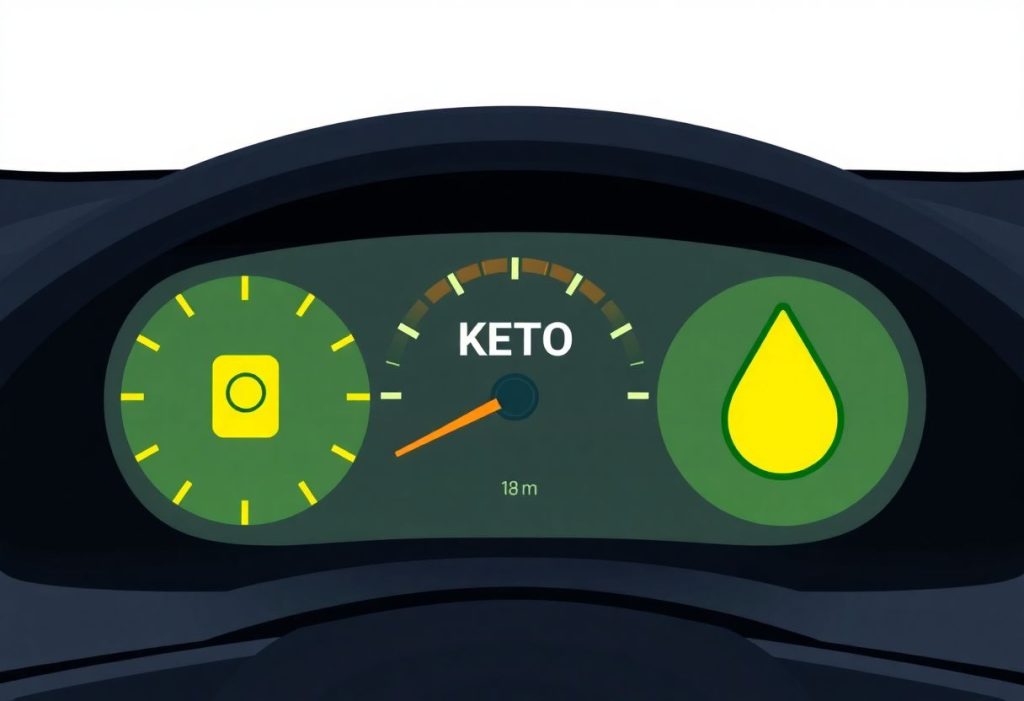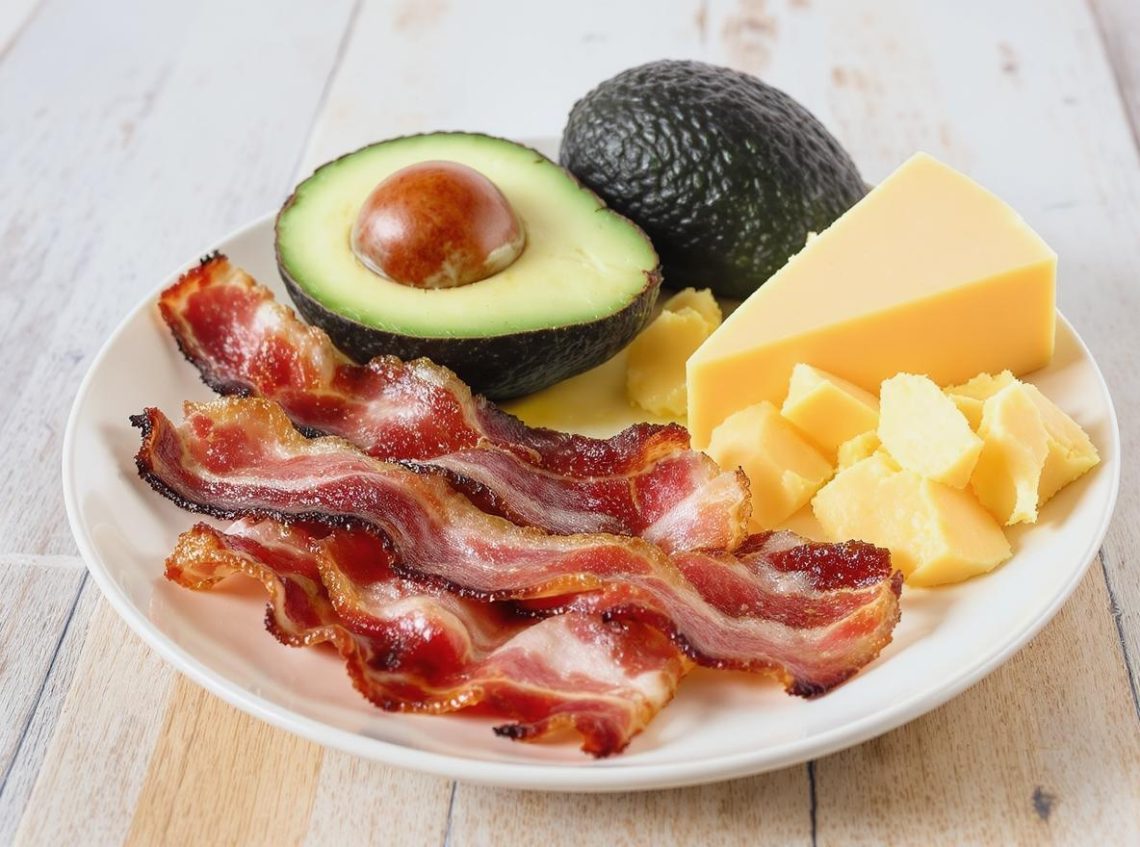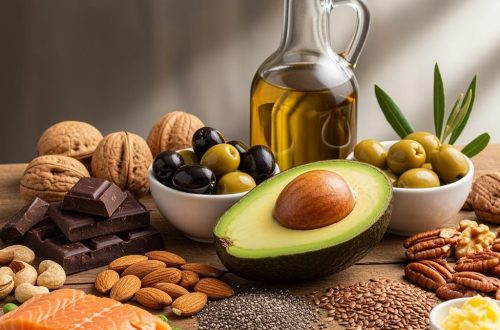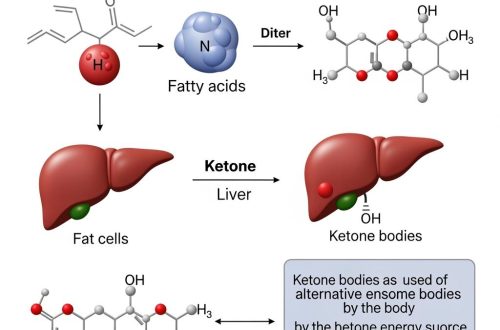The Secret Behind Keto’s No-Hunger Promise and Your Favorite High-Fat Foods
What Makes Keto Different from Every Other Diet You’ve Tried
Let’s be honest—most diets suck. You’re constantly battling hunger pangs, counting calories obsessively, and feeling like you’re depriving yourself of everything good in life. But what if I told you there’s a way of eating where bacon, avocados, and cheese are actually encouraged?
Welcome to the ketogenic diet, where the rules you’ve been taught about dieting get flipped upside down. While other diets focus on restriction and portion control, keto takes a completely different approach. Instead of limiting how much you eat, it changes what you eat—and somehow, magically, you end up eating less without even trying.
The biggest game-changer? You’re not hungry all the time.
This isn’t some marketing gimmick or too-good-to-be-true promise. There’s actual science behind why keto works differently than every other diet you’ve attempted and failed at. The secret lies in how your body processes different types of fuel.
The Science Behind Why Keto Kills Your Hunger
How Your Body Switches from Sugar Burning to Fat Burning
Your body is basically a hybrid car that can run on two different fuel sources: glucose (sugar) and ketones (fat). For most of your life, you’ve been running on glucose because that’s what comes from carbs. But here’s the problem—glucose burns fast and leaves you wanting more.
When you drastically reduce carbs to under 50 grams per day, something incredible happens. Your liver starts breaking down fat into ketones, and your body enters a metabolic state called ketosis. Think of it as switching from regular gas to premium fuel that burns cleaner and lasts longer.
This metabolic switch usually takes 3-7 days, and during this transition, your hunger patterns completely change. The constant need to refuel every few hours disappears because fat provides a much more stable energy source.
Why Fat and Protein Keep You Fuller Longer Than Carbs
Carbs are like that friend who’s fun but unreliable. They give you quick energy, spike your blood sugar, and then leave you crashed on the couch an hour later, wondering where all your energy went.
Fat and protein, on the other hand, are the reliable friends who stick around. They take more energy to digest, release hormones that signal fullness, and provide steady energy without the rollercoaster ride. When you eat a meal high in fat and protein, your stomach literally stays fuller longer because these macronutrients take up more space and digest more slowly.
Plus, fat triggers the release of CCK, a hormone that tells your brain “hey, we’re good here, no need for more food.” Protein does something similar with hormones like GLP-1. It’s like having an internal appetite control system that actually works.
The Holy Trinity of Keto Foods
Bacon – The Breakfast Hero That’s Actually Diet-Friendly
Remember when bacon was diet enemy number one? Those days are gone. On keto, bacon isn’t just allowed—it’s practically required. A few strips of bacon can keep you satisfied for hours because of its high fat content and decent protein.
The key is choosing quality bacon without added sugars or fillers. Look for brands that cure their bacon with celery powder instead of synthetic nitrates. Cook it up crispy, and you’ve got a satisfying addition to eggs, salads, or just eaten on its own.
Many keto dieters find that a bacon and egg breakfast keeps them full until dinner. Try doing that with a bowl of cereal.
Avocados – Nature’s Perfect Keto Package
If bacon is the king of keto, avocados are definitely the queen. These green powerhouses are packed with healthy monounsaturated fats, fiber, and potassium. Half an avocado contains about 15 grams of fat and only 2 net carbs.
The creamy texture makes them incredibly satisfying, and they’re versatile enough to work in both sweet and savory dishes. Mash them into guacamole, slice them over salads, or eat them straight with a spoon and some salt.
Fun fact: the fiber in avocados doesn’t count toward your daily carb limit because your body can’t digest it. This means you get the filling benefits without the carb consequences.
Cheese – Your New Best Friend in Weight Loss
Cheese might seem too good to be true on a diet, but it’s actually perfect for keto. Most cheeses are high in fat, moderate in protein, and contain virtually zero carbs. They’re also rich in calcium and other nutrients that support bone health.
Hard cheeses like cheddar, parmesan, and gouda are particularly keto-friendly. Soft cheeses like brie and camembert work great too. Even cream cheese becomes a staple for making keto-friendly desserts and fat bombs.
The protein in cheese helps build and maintain muscle mass while you’re losing fat. And let’s be real—any diet that includes cheese is a diet you can actually stick to.
Breaking Down the Keto Hunger Mystery
Why Traditional Diets Leave You Starving
Most diets fail because they’re based on the flawed concept of “calories in, calories out.” They tell you to eat less and move more, but they ignore the hormonal aspects of hunger and satiety. When you restrict calories while still eating carbs, your blood sugar goes on a wild ride all day long.
Every time your blood sugar drops, your body panics and sends hunger signals. You end up fighting your own biology, which is a battle you’re destined to lose. Willpower only goes so far when your hormones are screaming for food.
Traditional low-fat diets are especially problematic because fat is what makes food satisfying. Remove the fat, and you’re left with bland, unsatisfying meals that leave you craving more food within hours.
How Ketosis Changes Your Appetite Hormones
Ketosis doesn’t just change how your body burns fuel—it completely rewires your hunger signals. When you’re in ketosis, your body produces ketones that actually suppress appetite. It’s like having a natural appetite suppressant running through your bloodstream 24/7.
Ghrelin, known as the “hunger hormone,” decreases significantly on keto. Meanwhile, hormones that signal fullness, like leptin and CCK, work more effectively. Your brain finally gets clear signals about when you’re actually hungry versus when you’re just eating out of habit or boredom.
Many people report that they naturally start doing intermittent fasting on keto because they’re simply not hungry for breakfast or can easily skip meals without feeling deprived.
The Role of Blood Sugar Stability in Hunger Control
Stable blood sugar is the secret sauce of appetite control. When your blood sugar is stable, you don’t experience those desperate “I need food NOW” moments that derail every diet attempt.
On keto, your blood sugar stays remarkably stable throughout the day because you’re not constantly feeding it glucose from carbs. This stability means consistent energy levels and predictable hunger patterns. You eat when you’re actually hungry, not when your blood sugar crashes.
This stability also improves sleep, mood, and mental clarity. It’s hard to overeat when you’re not dealing with blood sugar-induced cravings and energy crashes.
Real Talk About Starting Keto
What to Expect in Your First Week
The first week of keto can be rough. Your body is literally learning how to use a different fuel source, and there’s an adjustment period. You might experience the “keto flu”—fatigue, headaches, and irritability as your body adapts.
But here’s what most people don’t tell you: the hunger changes happen fast. Many people notice reduced appetite within the first few days, even before they’re fully in ketosis. By the end of week one, most people are amazed at how little they want to eat.
Stay hydrated and make sure you’re getting enough electrolytes (sodium, potassium, and magnesium) during this transition. The symptoms are temporary, but the appetite control benefits are long-lasting.
Common Mistakes That Bring Back the Hunger
The biggest mistake new keto dieters make is not eating enough fat. They’re so conditioned to fear fat that they try to do “low-carb, low-fat” which is just a recipe for hunger and failure. If you’re hungry on keto, you’re probably not eating enough fat.
Another common mistake is eating too much protein. While protein is important, too much can actually kick you out of ketosis because your body can convert excess protein to glucose. Aim for moderate protein intake and let fat be your primary fuel source.
Hidden carbs are hunger killers too. Those “keto-friendly” products with artificial sweeteners might still trigger cravings and hunger in some people. Stick to whole foods when possible.
Tips for Making High-Fat Eating Work for You
Start your day with fat. A bulletproof coffee with grass-fed butter or MCT oil can keep you satisfied for hours. If you’re not a coffee person, try a fat bomb or some avocado with salt.
Cook with healthy fats like coconut oil, avocado oil, and grass-fed butter. Add olive oil to salads and vegetables. Don’t be afraid of the fat that comes naturally in meat and fish.
Plan your meals around fat and protein first, then add low-carb vegetables. This ensures you’re getting enough of the macronutrients that keep you full while staying within your carb limits.
The Surprising Benefits Beyond Weight Loss
Mental Clarity and Energy Boosts
One of the most surprising benefits of keto is the mental clarity. Many people report feeling like a mental fog has been lifted once they’re in ketosis. This makes sense because ketones are actually a more efficient fuel source for the brain than glucose.
Energy levels become incredibly stable on keto. No more 3 PM energy crashes or needing caffeine to function. Your energy comes from your own fat stores, which is like having an unlimited fuel tank.
This stable energy makes it easier to be active and make good food choices, creating a positive cycle that supports your health goals.
Better Sleep and Mood Stability
Blood sugar stability doesn’t just affect hunger—it affects sleep and mood too. Many keto dieters report falling asleep faster and sleeping more deeply. Without blood sugar spikes and crashes, your body can maintain its natural circadian rhythms more effectively.
Mood swings often disappear on keto. When you’re not dealing with hangry episodes from blood sugar crashes, it’s easier to maintain emotional balance throughout the day. Some people even report improvements in anxiety and depression symptoms.
Long-Term Health Improvements
The appetite control benefits of keto often lead to sustainable weight loss, which has cascading health benefits. Blood pressure often improves, inflammation markers decrease, and many people see improvements in their lipid profiles.
Type 2 diabetics often see dramatic improvements in blood sugar control, sometimes to the point where they can reduce or eliminate medications (with medical supervision, of course).
The anti-inflammatory effects of ketosis may also provide protection against chronic diseases and support healthy aging.
Making Keto Sustainable in Real Life
Simple Meal Ideas That Actually Taste Good
Keto meals don’t have to be complicated. A simple grilled chicken thigh with roasted broccoli cooked in butter is both delicious and perfectly keto. Add some cheese and avocado, and you’ve got a satisfying meal.
Eggs are your best friend on keto. Scrambled with butter and cheese, made into an omelet with vegetables, or hard-boiled for a quick snack. They’re cheap, versatile, and incredibly satisfying.
Salads become exciting when you can load them up with full-fat dressing, cheese, nuts, and avocado. Add some grilled protein, and you’ve got a meal that will keep you full for hours.
How to Handle Social Situations and Cravings
Social eating doesn’t have to derail your keto lifestyle. Most restaurants can accommodate keto requests—just ask for your burger without the bun, or your salad with extra dressing. Don’t be afraid to speak up about your dietary needs.
When cravings hit, ask yourself if you’re actually hungry or just bored, stressed, or emotional. True hunger on keto is rare once you’re adapted. Often, a glass of water or a short walk will make the craving pass.
Keep keto-friendly snacks on hand for emergencies: nuts, cheese, hard-boiled eggs, or avocado. Having options available prevents you from making poor choices when hunger does strike.
Building a Keto Lifestyle That Sticks
The key to long-term success with keto is making it a lifestyle, not a temporary diet. Focus on how good you feel rather than just the number on the scale. The appetite control, stable energy, and mental clarity are benefits worth maintaining.
Be flexible with yourself. If you have a high-carb meal occasionally, just get back on track the next day. Perfection isn’t the goal—consistency is.
Find a community of like-minded people who understand the keto lifestyle. Having support makes all the difference when you’re making a significant change to how you eat.
The beauty of keto is that once you experience true appetite control, going back to constant hunger and cravings feels unnecessary. When bacon, avocados, and cheese are on the menu, dieting doesn’t feel like deprivation—it feels like freedom.





